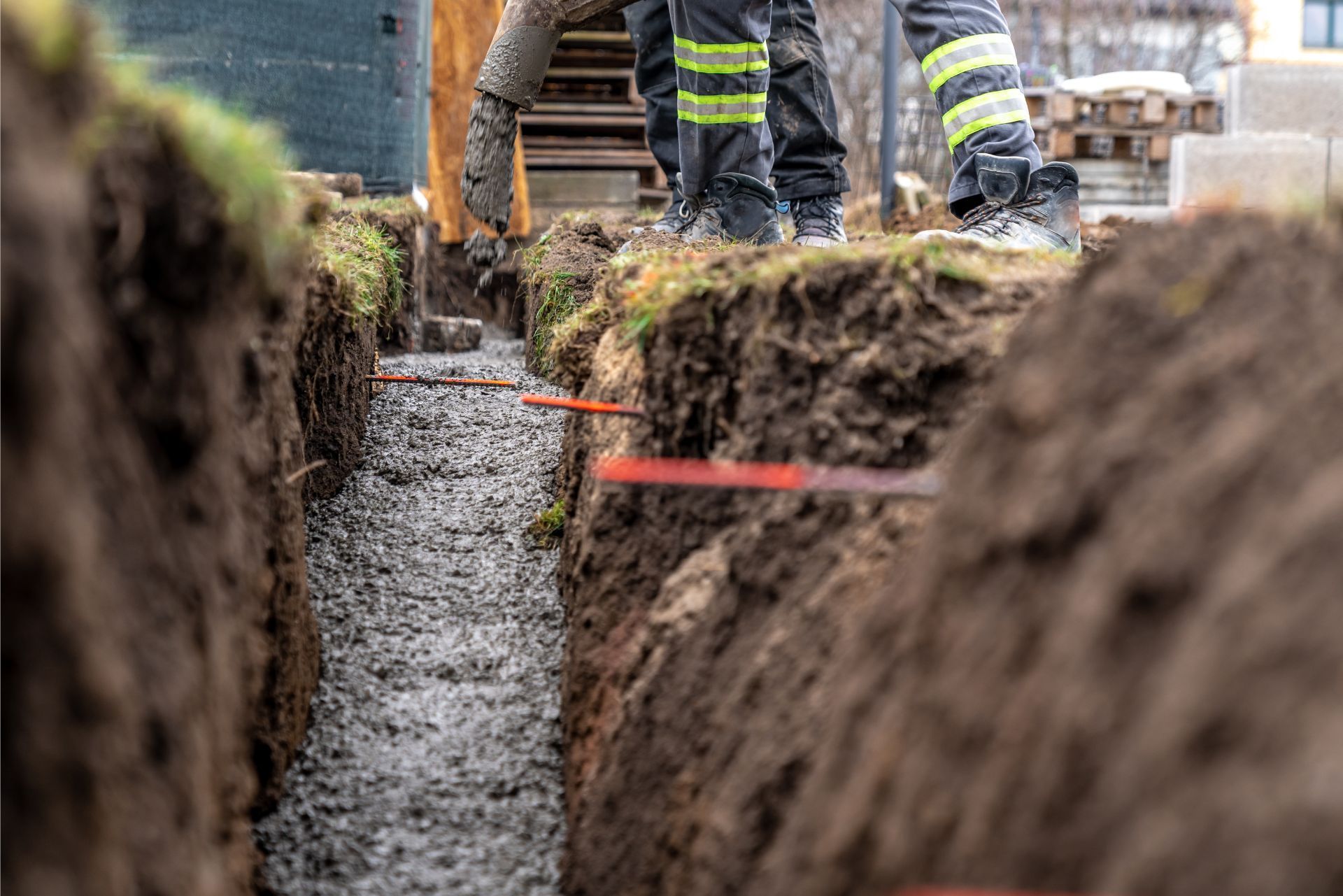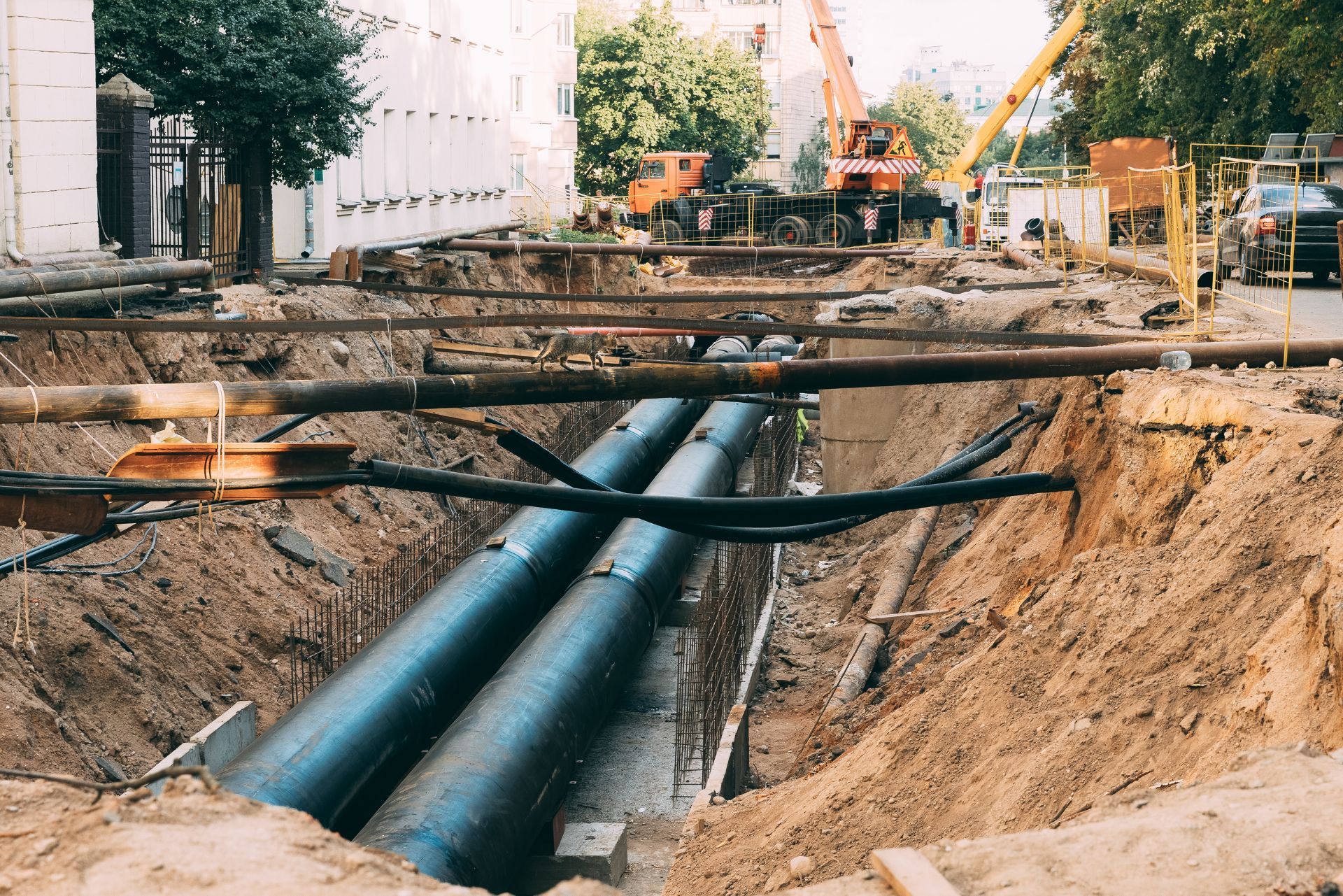Top 3 Recommended Policies

In the bustling metropolis of New York City, infrastructure plays a crucial role in maintaining the daily lives of its residents. Among the many components that keep the city running smoothly are underground utility lines. These lines, which include water, gas, electricity, and telecommunications, are essential for modern living. However, they also come with risks and potential liabilities. This is where underground utility line insurance comes into play. This article will provide a comprehensive overview of what underground utility line insurance is, why it is important, and how to navigate the complexities of obtaining coverage in New York.
Understanding Underground Utility Lines
Before delving into insurance specifics, it is essential to understand what underground utility lines are and their significance. These lines are typically buried beneath the surface of streets and sidewalks, connecting homes and businesses to essential services. Their placement is often dictated by urban planning regulations and safety standards. Properly installed and maintained utility lines are crucial for the functioning of modern infrastructure, ensuring that communities have reliable access to water, electricity, and communication services.
Moreover, the installation of these lines is not a simple task. It involves careful planning and coordination among various stakeholders, including utility companies, local governments, and construction teams. This collaboration helps to minimize disruptions during installation and maintenance, which can be particularly challenging in densely populated urban areas. Additionally, advancements in technology have led to improved methods for locating and mapping these utility lines, which is vital for preventing accidental damage during excavation or construction projects.
Types of Underground Utility Lines
Various types of utility lines are buried underground, each serving a distinct purpose. The most common types include:
- Water Lines: These lines supply potable water to homes and businesses.
- Sewer Lines: Responsible for carrying wastewater away from properties.
- Gas Lines: Used for transporting natural gas for heating and cooking.
- Electric Lines: Deliver electricity to residential and commercial buildings.
- Telecommunication Lines: Facilitate internet, cable, and telephone services.
Each type of utility line has its own set of regulations and maintenance requirements, making it crucial for property owners and contractors to understand their responsibilities. For instance, water and sewer lines often require regular inspections to prevent leaks that could lead to significant property damage or health hazards. Similarly, electric lines must adhere to stringent safety codes to prevent hazards such as electrocution or fire. Understanding these nuances not only helps in compliance with local regulations but also fosters a culture of safety within the community.
Common Risks Associated with Underground Utility Lines
While underground utility lines are vital, they are also susceptible to various risks. Damage can occur due to construction activities, natural disasters, or even aging infrastructure. Some common risks include:
- Accidental Damage: Construction or excavation work can inadvertently damage utility lines.
- Natural Disasters: Events such as floods or earthquakes can disrupt utility services.
- Corrosion: Over time, pipes can corrode, leading to leaks and service interruptions.
Understanding these risks is essential for property owners to mitigate potential liabilities and ensure the safety of their premises. Additionally, utility companies often have protocols in place for responding to emergencies, such as gas leaks or water main breaks, which can help minimize the impact on the community. For instance, many municipalities have implemented advanced monitoring systems that can detect anomalies in utility lines, allowing for quicker responses to potential issues. This proactive approach not only safeguards public safety but also helps maintain the integrity of essential services that residents rely on daily.

What is Underground Utility Line Insurance?
Underground utility line insurance is a specialized form of insurance designed to protect property owners from financial losses resulting from damage to underground utility lines. This coverage is particularly important for those who own or manage properties where these lines are present. Utility lines, which can include water, gas, electricity, and telecommunications, are often buried beneath the ground, making them vulnerable to accidental damage during construction, landscaping, or even natural events like flooding. Understanding the risks associated with these lines is crucial for any property owner, as the costs of repairs and potential liabilities can be substantial.
Key Features of Underground Utility Line Insurance
This type of insurance typically includes several key features:
- Coverage for Repair Costs: It covers the expenses associated with repairing damaged utility lines, which can be extensive depending on the severity of the damage and the type of utility involved.
- Liability Protection: Provides protection against claims arising from damages to third-party utility lines, ensuring that property owners are not held financially responsible for incidents that occur due to their activities.
- Loss of Service: Some policies may cover loss of service for utilities that are disrupted due to damage, which can be particularly important for businesses that rely on consistent utility access.
These features can vary significantly between insurance providers, making it crucial to review policy details carefully. Additionally, some policies may offer extended coverage options, such as environmental cleanup costs if a utility line break leads to hazardous material spills. It’s advisable for property owners to consult with insurance professionals to tailor their coverage to their specific needs and risks.
Who Needs Underground Utility Line Insurance?
While underground utility line insurance is beneficial for many property owners, it is particularly essential for:
- Homeowners: Those with properties that have underground utility lines should consider this coverage to protect against unforeseen damages, especially if they plan to undertake any renovations or landscaping that could disturb the ground.
- Contractors: Construction professionals working in urban areas where utility lines are prevalent can benefit from this insurance to mitigate risks associated with their projects, as accidental damage to these lines can halt work and lead to costly delays.
- Property Managers: Individuals managing multiple properties need to safeguard against potential liabilities related to utility line damages, ensuring that they are prepared for any incidents that may arise across their portfolio.
In essence, anyone who interacts with or owns property that has underground utility lines should consider obtaining this insurance. Moreover, local regulations may even require certain types of coverage, especially for businesses operating in areas with dense utility networks. Understanding the legal landscape and ensuring compliance can further protect property owners from unexpected liabilities and enhance their overall risk management strategies.
The Importance of Underground Utility Line Insurance
Having underground utility line insurance is not just about protecting physical assets; it is also about ensuring peace of mind. The implications of not having adequate coverage can be severe, both financially and legally. In an age where infrastructure is increasingly complex, understanding the nuances of utility line insurance becomes essential for homeowners and businesses alike.
Financial Protection
One of the most significant advantages of underground utility line insurance is the financial protection it offers. Repairing damaged utility lines can be incredibly costly, often running into thousands of dollars. Without insurance, property owners may find themselves facing substantial out-of-pocket expenses. Moreover, the costs associated with utility line repairs can escalate quickly if the damage leads to service interruptions, necessitating emergency repairs that often come with premium price tags. This financial burden can be particularly daunting for small business owners who rely on utilities for their daily operations, emphasizing the need for comprehensive coverage.
Legal Liability
In addition to the financial aspect, property owners could be held legally liable for damages caused to underground utility lines. This liability can extend to third-party claims, especially if the damage disrupts service for neighboring properties. Insurance helps mitigate these risks by providing legal defense and coverage for settlements or judgments. Furthermore, the legal landscape surrounding utility line damage can be intricate, with various regulations and local ordinances coming into play. Without proper insurance, property owners may find themselves navigating a complex web of legal challenges, which can be both time-consuming and costly. By investing in underground utility line insurance, property owners not only safeguard their finances but also ensure they are well-prepared to handle any legal repercussions that may arise from unexpected incidents.
How to Obtain Underground Utility Line Insurance in New York
Acquiring underground utility line insurance in New York involves several steps. Understanding the process can help streamline the experience and ensure comprehensive coverage.
Assess Your Needs
The first step in obtaining insurance is to assess your specific needs. Consider factors such as:
- The type of property you own or manage.
- The presence and condition of underground utility lines.
- Your potential exposure to risks associated with those lines.
By evaluating these factors, you can better understand the level of coverage required. Additionally, it may be beneficial to consult with professionals, such as engineers or property inspectors, who can provide insights into the condition of your underground utilities. They can help identify any existing issues that may need to be addressed before obtaining insurance, ultimately leading to a more accurate assessment of your coverage needs.
Research Insurance Providers
Once you have a clear understanding of your needs, the next step is to research insurance providers that offer underground utility line insurance. Look for companies with a solid reputation, positive customer reviews, and experience in the New York market.
Consider reaching out to local insurance agents who specialize in property insurance. They can provide valuable insights and help you navigate the various options available. Furthermore, it’s wise to check if the insurance providers you are considering have a history of handling claims efficiently, as this can significantly impact your experience should you ever need to file a claim.
Compare Policies and Quotes
After identifying potential insurance providers, it is essential to compare policies and quotes. Pay attention to the following aspects:
- Coverage Limits: Ensure that the policy covers the full extent of potential damages.
- Exclusions: Be aware of what is not covered under the policy.
- Premium Costs: Compare the costs of premiums to find a policy that fits your budget.
Taking the time to compare different policies can lead to significant savings and better coverage. Additionally, consider the deductible amounts associated with each policy, as a higher deductible may lower your premium but could also increase your out-of-pocket expenses in the event of a claim. It may also be beneficial to inquire about any discounts that may apply, such as those for bundling policies or for having a history of no claims.
Common Exclusions in Underground Utility Line Insurance
While underground utility line insurance provides essential coverage, it is crucial to be aware of common exclusions that may apply. Understanding these exclusions can help property owners avoid unexpected surprises when filing a claim.
Pre-existing Conditions
Most insurance policies will not cover damages resulting from pre-existing conditions. If utility lines were already damaged before the policy was in effect, the insurance provider may deny the claim. Regular maintenance and inspections can help identify issues before they become significant problems.
Negligence
Insurance typically does not cover damages resulting from negligence on the part of the property owner. For instance, if a property owner fails to maintain their utility lines or ignores warning signs of potential issues, they may be held responsible for any resulting damages.
Acts of God
Many policies include exclusions for damages caused by natural disasters, often referred to as "acts of God." This can include events such as floods, earthquakes, or severe storms. Property owners may need to consider additional coverage options to protect against these risks.

Filing a Claim for Underground Utility Line Damage
In the unfortunate event of damage to underground utility lines, knowing how to file a claim is essential. The process can vary depending on the insurance provider, but there are general steps that can be followed.
Document the Damage
The first step in filing a claim is to document the damage thoroughly. Take photographs of the affected area, gather any relevant reports, and note the circumstances surrounding the incident. This documentation will be crucial when presenting your case to the insurance company.
Contact Your Insurance Provider
Once the damage has been documented, contact your insurance provider to report the incident. Provide them with all necessary information and documentation. Be prepared to answer questions about the circumstances of the damage and any steps taken to mitigate further issues.
Follow Up
After filing the claim, it is essential to follow up with the insurance company regularly. Keep a record of all communications and be proactive in providing any additional information they may request. This will help ensure a smoother claims process and expedite the resolution.
Cost of Underground Utility Line Insurance
The cost of underground utility line insurance can vary significantly based on several factors. Understanding these factors can help property owners budget appropriately for this essential coverage.
Factors Influencing Insurance Premiums
Several factors can influence the cost of underground utility line insurance, including:
- Property Location: Areas with a higher risk of utility line damage may have higher premiums.
- Type of Coverage: Comprehensive policies that cover a wide range of risks will typically cost more than basic plans.
- Claims History: A history of frequent claims can lead to higher premiums as insurers assess risk based on past behavior.
By understanding these factors, property owners can make informed decisions about their insurance needs.
Average Costs
While the costs can vary widely, the average annual premium for underground utility line insurance in New York can range from a few hundred to several thousand dollars, depending on the coverage level and property specifics. It is advisable to obtain multiple quotes to find the best coverage for your budget.
Conclusion
Underground utility line insurance is a vital consideration for property owners in New York. With the potential for significant financial losses and legal liabilities associated with damage to utility lines, having the right coverage is essential. By understanding the types of utility lines, the importance of insurance, and the steps to obtain it, property owners can protect themselves and their investments.
As urban infrastructure continues to evolve, staying informed about insurance options will ensure that property owners are prepared for any challenges that may arise. Whether you are a homeowner, contractor, or property manager, investing in underground utility line insurance can provide peace of mind and financial security.
Contact Us
Phone
Location

